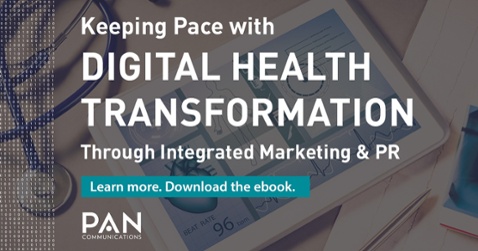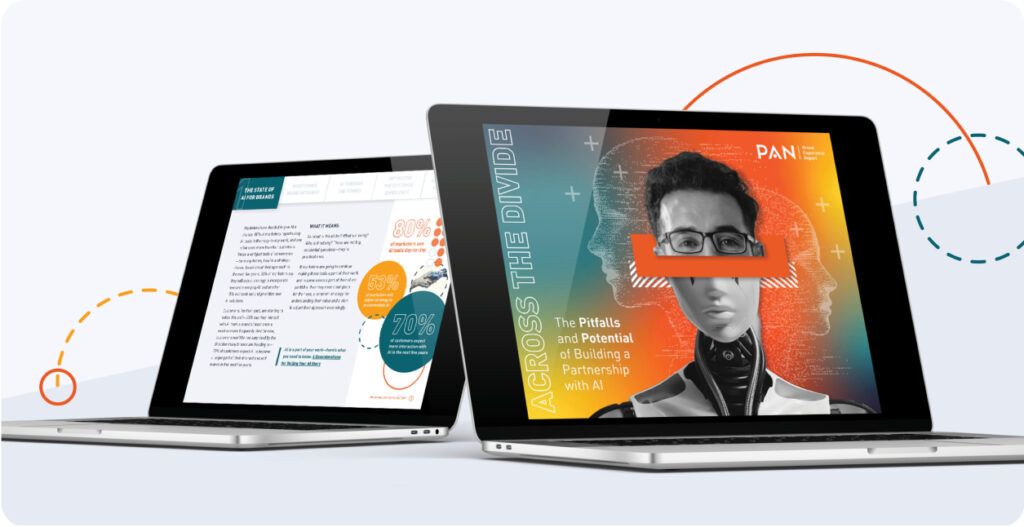Digital transformations are driving disruption within the healthcare landscape and are affecting how audiences receive information and engage with brands. This poses major challenges for the modern healthcare marketer and the role PR plays in healthcare today.

Predicting the future of healthcare marketing is a constantly moving target and a near-impossible task, especially when you factor in the simultaneous evolution of two distinct industries: healthcare and marketing. As the healthcare industry undergoes significant transformation, marketing must naturally modernize to keep up with the addition of new channels, the different ways generations (Gen Facebook comes to mind) interact with content and the impact data and analytics can have, to name a few. Forecasting this industry is not easy, and contributing to the evolution has become just as hard. Even though the future will never be crystal clear, today’s healthcare marketers need to stay sharp and be ready for the changes that lay ahead.
There are two large and powerful forces that have swept the healthcare landscape recently and are changing the game for all key constituents. The first is the seismic shift from a fee-for-service payment system to a value-based model. What is this? In the current fee-for-service model of reimbursing providers for healthcare, physicians and organizations have incentives to do more. The more tests they order, patients they see, or procedures they do, equates to the more money they will make. With this shift, the emphasis will move from quantity to quality whereby measurement (and payment / reimbursement) is accounted for in quality outcomes and patient satisfaction rather than volume of tests, procedures, screenings, etc.
The second, and perhaps the most affecting, is the rise of consumer-driven healthcare. In the past, benefit-rich health plans, mainly through an individual’s employer, would bear the majority of costs and, therefore, consumers didn’t have to think — or understand — much beyond plan selection, leading to an overall lack of fluency and engagement and, oftentimes, irresponsible spending. However, in today’s new healthcare eco-system, empowered healthcare consumers are taking center stage and have been put in a position whereby they are now far more responsible financially for their healthcare — and benefits — and all related decisions regarding it. As a result, consumers are increasingly attentive to the cost implications of their choices. In fact, according to recent industry research, 76 percent of consumers now say they are very focused on getting the best value for their healthcare dollars and 66 percent of consumers rate “planning for out-of-pocket costs” as the most challenging and stressful aspect of managing their healthcare. Other decisions that consumers find particularly challenging cited in the research include understanding out-of-pocket responsibilities prior to receiving care, comparing costs and assessing whether medical charges are correct. Wrapped in with those two main drivers are, of course, issues and policy such as HIPPA and the Affordable Care Act, as well as the proliferation of technology across all healthcare sectors. These are not only driving disruption within healthcare but also shaping the means by which audiences can and will receive their information and engage with brands. So, in terms of the changes impacting healthcare, this just begins to scratch the surface. But, regardless, it is clear that the degree of change healthcare marketers face is, arguably, unparalleled compared with all other industries.
Learn more about integrated marketing and PR, read: Implementing an Integrated Marketing and PR Strategy for Healthcare Brands.
As a result, within this ever-changing environment and against the backdrop of the aforementioned forces, payers, providers, vendors, and hospitals and care facilities are all faced with one new and very startling reality: yesterday’s “how” and “who” is vastly different than tomorrow’s. Meaning, their target audience(s) and how to reach — and engage — them is evolving quickly and must be not only understood but also acted upon before the opportunity is lost and educated consumers and patients go elsewhere.
But what does it all mean and how do marketers accomplish it in today’s increasingly complex environment? There are several things to keep in mind. First and foremost, and most obvious, healthcare marketers must deeply understand their audiences, including their behaviors and preferences, and then create relevant campaigns that best meet the needs of those audiences in order to connect with them to drive action. Summing it up in one word: targeting. Marketers must employ systematic targeting approaches to help facilitate decisions regarding communication vehicles to their key audiences, whether that be patients/consumers, payers or providers. Moving forward into this new age of healthcare and marketing, a greater degree of precision must be applied to ensure that messages reach an audience that is receptive, attentive and motivated to take action. For example, reaching and engaging with Millennials, and specifically Gen F (those Millennials that have grown up using social media as their primary form of communication and networking), is vastly different than doing so with baby boomers.
The expectations of Gen F are changing the way in which all businesses, and specifically healthcare entities, incorporate and use technology when interacting with this group — the channels used, the types of content employed, the tone and style, look and feel, timing and frequency must all be carefully considered for maximum impact. A key here is the role of technology and how it is used by key constituents to interact with brands and access information and content. Digital media has been, and will continue to be, a strong catalyst, making access to health information prolific via the internet and mobile apps, regardless of whether a consumer wants to research chronic conditions or health and wellness products, participate in online patient communities, or look up cost and quality measures to guide their choice of healthcare provider, plan and/or and benefit options. In fact, according to the DMN3 Institute’s recent Benchmark Study, digital channels are overtaking traditional marketing channels across all marketing sectors, including healthcare. According to a separate study, this one from Medical Marketing & Media, ‘the greatest growth for the pharmaceutical, diagnostics, biotech and medical device marketing budgets is taking place in social media, mobile/tablet apps and digital sales materials. For consumer marketing tactics, the greatest growth is taking place in mobile/tablet apps, social media and digital ads.’
A key to understanding audiences for deeper insights, and a driving force behind the utilization of digital media and other channels, including content marketing and earned media, to implement successful marketing campaigns, is data. It seems everywhere we turn we are hearing about data and analytics — we can’t escape it, and marketers should learn to embrace it now more the ever before. Knowing what data you have and how to use it is critical to the planning and implementation of effective campaigns that can truly generate excellent credibility for healthcare organizations as they move and transform. It’s important that today’s marketers spend the time to understand what data they have access to currently. They should also determine what additional or new data they need to start collecting for better and deeper insights into the target audience they are trying to understand and reach. Once they have a handle on those two questions (what data do I have now? What data do I need in the future?), the next consideration for marketers is how to capture, manipulate, analyze and track all of that data. Do they have a Content Management System like HubSpot or Pardot? A customer relationship management system like Salesforce? What automated processes are being used to manage email campaigns? These are just a few examples of the types of systems potentially in the marketer’s arsenal, but the key is knowing whether the data created and stored in those systems is easily integrated, accessible, and usable. Is there an infrastructure in place to help the marketer understand it all to develop creative, personalized and highly engaging campaigns?
Today, 80 percent of any decision to purchase is made before a service provider is even contacted. Long gone are the days when patients/consumers were only able to get information from their doctor. They can now access information when they want, where they want and on any device they choose. Within this new environment, it’s important that audiences are aware of your brand and educated on what it offers and its benefits. It’s also critical to be a part of the decision making process early on and to build a relationship over time – consumers will pull together the information they need to get comfortable making a decision. They do this on their own terms and marketers need to fit into that in a non-invasive manner, offering value.
How can that be done? It’s all about providing great content that is visually appealing, informative, non-promotional of a brand or product/service and can be shared at the right time through the right channel. And, as we all know, content comes in many forms — visual, audio, video and the written word (print or online) so, based on your audience behaviors and preferences, your pace and what your data is telling you, be sure to use the right form (or combination of forms) to get the desired results. Content is still king. In con-junction with your content efforts, keep in mind the importance of a strategic earned media campaign. Earned media can create thought leadership and express strong POVs that can not only be used as part of your content strategy, but also supplement it to impact decisions during a customer or prospect’s evaluation process, steering them further down the path to purpose.
Data, content, earned media and digital engagement are all great, but they are useless to today’s marketer if there is no measurement in place to understand how all of the pieces are working together and resonating with the desired audience to move the needle in a positive direction (or, if not, understanding where things are failing so you can adjust accordingly). Results — often in real-time — based on data have become increasingly mandatory in healthcare marketing. Marketers are spending too much time, money and resources to rely upon subjective or hypothetical means of determining the success and impact of a campaign. Marketers must be able to quantifiably measure success by demonstrating actual follow-through/engagement/action, regardless of how that is measured within a specific campaign — it could be downloads, click-throughs, open rates, subscribes, shares, SOV or likes, to name a few. Having a strong handle on measurement allows for a post-mortem to cull out key learnings, findings, failings, successes which, in turn, can be used for tweaking, revising, altering and improving the next campaign. Without data-based measurement, that is not possible.
As the healthcare market quickly changes — oftentimes on a daily basis — and as that collides with the advances taking place in marketing, it is important that marketers embrace these changes, take the time to understand them and determine how they can best implement the right ones within their organization, company, hospital or practice to stay ahead of the curve and make an impact.




